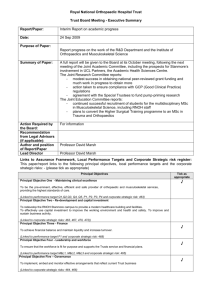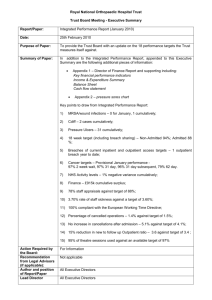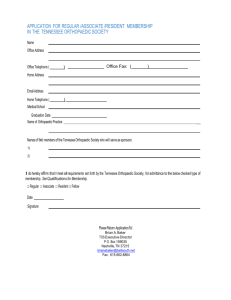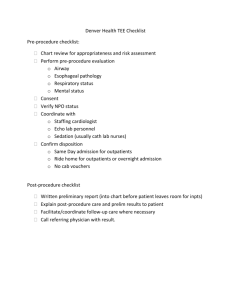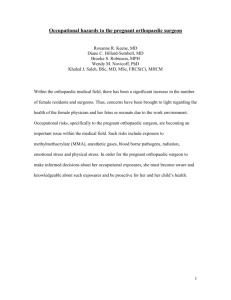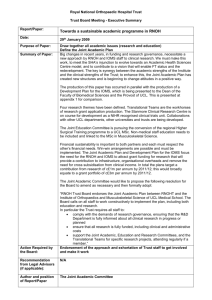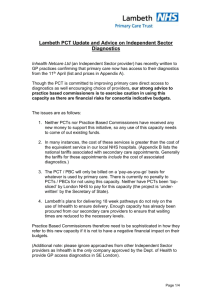Executive Summary, Outpatient Survery 2009 results
advertisement
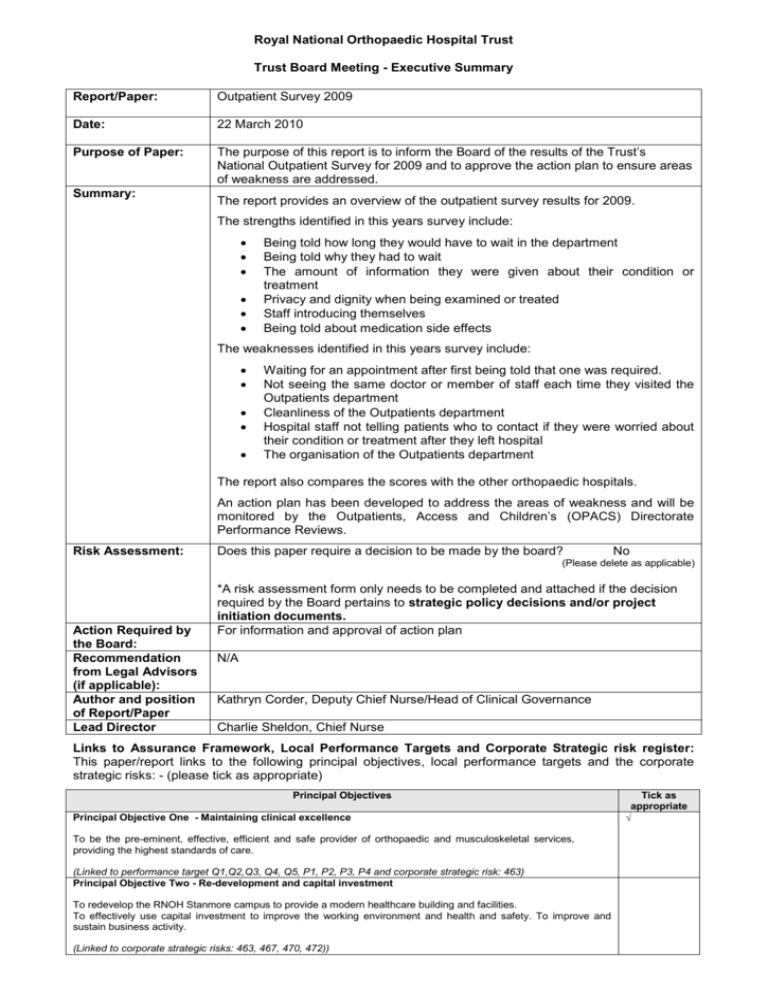
Royal National Orthopaedic Hospital Trust Trust Board Meeting - Executive Summary Report/Paper: Outpatient Survey 2009 Date: 22 March 2010 Purpose of Paper: The purpose of this report is to inform the Board of the results of the Trust’s National Outpatient Survey for 2009 and to approve the action plan to ensure areas of weakness are addressed. Summary: The report provides an overview of the outpatient survey results for 2009. The strengths identified in this years survey include: Being told how long they would have to wait in the department Being told why they had to wait The amount of information they were given about their condition or treatment Privacy and dignity when being examined or treated Staff introducing themselves Being told about medication side effects The weaknesses identified in this years survey include: Waiting for an appointment after first being told that one was required. Not seeing the same doctor or member of staff each time they visited the Outpatients department Cleanliness of the Outpatients department Hospital staff not telling patients who to contact if they were worried about their condition or treatment after they left hospital The organisation of the Outpatients department The report also compares the scores with the other orthopaedic hospitals. An action plan has been developed to address the areas of weakness and will be monitored by the Outpatients, Access and Children’s (OPACS) Directorate Performance Reviews. Risk Assessment: Does this paper require a decision to be made by the board? No (Please delete as applicable) Action Required by the Board: Recommendation from Legal Advisors (if applicable): Author and position of Report/Paper Lead Director *A risk assessment form only needs to be completed and attached if the decision required by the Board pertains to strategic policy decisions and/or project initiation documents. For information and approval of action plan N/A Kathryn Corder, Deputy Chief Nurse/Head of Clinical Governance Charlie Sheldon, Chief Nurse Links to Assurance Framework, Local Performance Targets and Corporate Strategic risk register: This paper/report links to the following principal objectives, local performance targets and the corporate strategic risks: - (please tick as appropriate) Principal Objectives Principal Objective One - Maintaining clinical excellence To be the pre-eminent, effective, efficient and safe provider of orthopaedic and musculoskeletal services, providing the highest standards of care. (Linked to performance target Q1,Q2,Q3, Q4, Q5, P1, P2, P3, P4 and corporate strategic risk: 463) Principal Objective Two - Re-development and capital investment To redevelop the RNOH Stanmore campus to provide a modern healthcare building and facilities. To effectively use capital investment to improve the working environment and health and safety. To improve and sustain business activity. (Linked to corporate strategic risks: 463, 467, 470, 472)) Tick as appropriate Principal Objective Three - Finance To achieve financial balance and maintain liquidity and increase turnover. (Linked to performance target F1 and corporate strategic risk: 468) Principal Objective Four - Leadership and workforce To ensure that the workforce is fit for purpose and supports the Trusts service and financial plans. (Linked to performance target M&L1, M&L2, M&L3 and corporate strategic risk: 465) Principal Objective Five – Governance To implement, embed and monitor effective arrangements that reflect current Trust business (Linked to corporate strategic risks: 464, 466) Principal Objective Six - Achievement of access/activity targets To achieve access targets and to deliver the activity targets. (Linked to performance target A1, A2, A3, A4, P1, P2, P 3, P 4 and corporate strategic risk: 463) Principal Objective Seven - IM&T Develop and implement a cohesive and integrated IM&T strategy. (Linked to corporate strategic risk: 471) Principal Objective Eight - Foundation Trust To achieve Foundation Trust status. (Linked to corporate strategic risks: 463, 467, 469, 472) Key: Q – Quality targets A – Access targets D – Financial targets M&L - Management & Leadership targets P – Productivity targets
